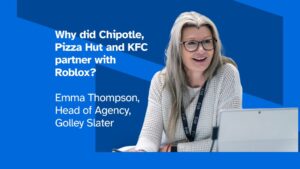By Joe Rudkin, Head of Marketing, Echobox
When Facebook announces a major change to its News Feed algorithm, publishers are often left scrambling to mitigate the impact on referral traffic. In 2018, Facebook reduced the amount of news content shown in the News Feed while June 2020’s algorithm update saw “original reporting” favored in News Feed rankings.
In reality, Facebook is constantly tweaking the “ranking signals” it uses – to prioritize certain News Feed content while penalizing other posts. Many publishers remain unaware that they are being routinely penalized by Facebook algorithms for posting at the “wrong” frequency – and missing out on significant quantities of reach and traffic as a result.
How are publishers being penalized?
When publishers post at certain frequencies (whether that’s too often or not often enough), Facebook algorithms appear to penalize that publisher’s Facebook Page by not displaying its posts as often in the News Feed. Over the course of a single day, these “hidden” penalties result in significant traffic opportunities essentially being wasted.
To understand precisely how these penalties are impacting publishers, and to quantify their effects in terms of lost traffic, Echobox recently completed a study into how different intervals between posts affected Facebook traffic for leading news, lifestyle and sports publishers.
Our data science team examined more than 250,000 Facebook posts, analyzing the time elapsed in minutes between two published posts and the average change in referral traffic from Facebook for each interval. This allowed us to understand when a publisher could post within any given hour before being penalized as well as when a publisher should post to generate a traffic increase.
What did we find?
We found that publishers’ referral traffic from Facebook decreases when posts are published at certain intervals. While only Facebook can confirm whether it actively penalizes publishers based on post frequency, we observed a statistically significant and nonlinear impact of post frequency on publishers’ Facebook traffic levels. In other words, Facebook algorithms – whether directly or as an indirect consequence – penalize publishers for posting either too frequently or too infrequently.
The yardstick for what constitutes posting “too frequently” or “too infrequently” varies: Facebook penalization thresholds are therefore unique to each publisher. While there are no one-size-fits-all recommendations that can be made with regards to post frequency and penalization, we can see that publishers of all types and sizes are subject to these penalties – whether they’re delivering breaking news or resharing evergreen content.
Consequently, it’s critical for publishers to know their own ideal post frequency, which can change over time. This knowledge allows them to avoid penalization, and to maximize
visibility and traffic throughout the day by posting at the right cadence and optimal times.
Publishers who do not know their ideal post frequency are likely losing out on significant traffic.
What can be done?
Determining optimal post frequency can be extremely complex. In addition to studying their own post performance in detail, a publisher would need to access an extensive dataset containing post performance data for other publishers to essentially reverse-engineer Facebook’s algorithms. Therefore, determining optimal post frequency at any given moment is virtually impossible for a single publisher to achieve on their own.
The good news is that the problem can be fixed. Indeed, we’ve spent years developing technology to minimize the effects of Facebook’s ever-changing penalization and can now identify and implement the optimal post frequency for a publication within a week.
Today, many content publishers still remain unaware of the impact of the penalization algorithm problem and are yet to take mitigating measures. Huge swathes of content, including those from leading news, fashion, lifestyle and sports brands never make the News Feed as a result. Any company that publishes regularly on Facebook could be missing out on valuable reach and traffic – so if you haven’t yet examined this issue we would urge you to read the research today.









